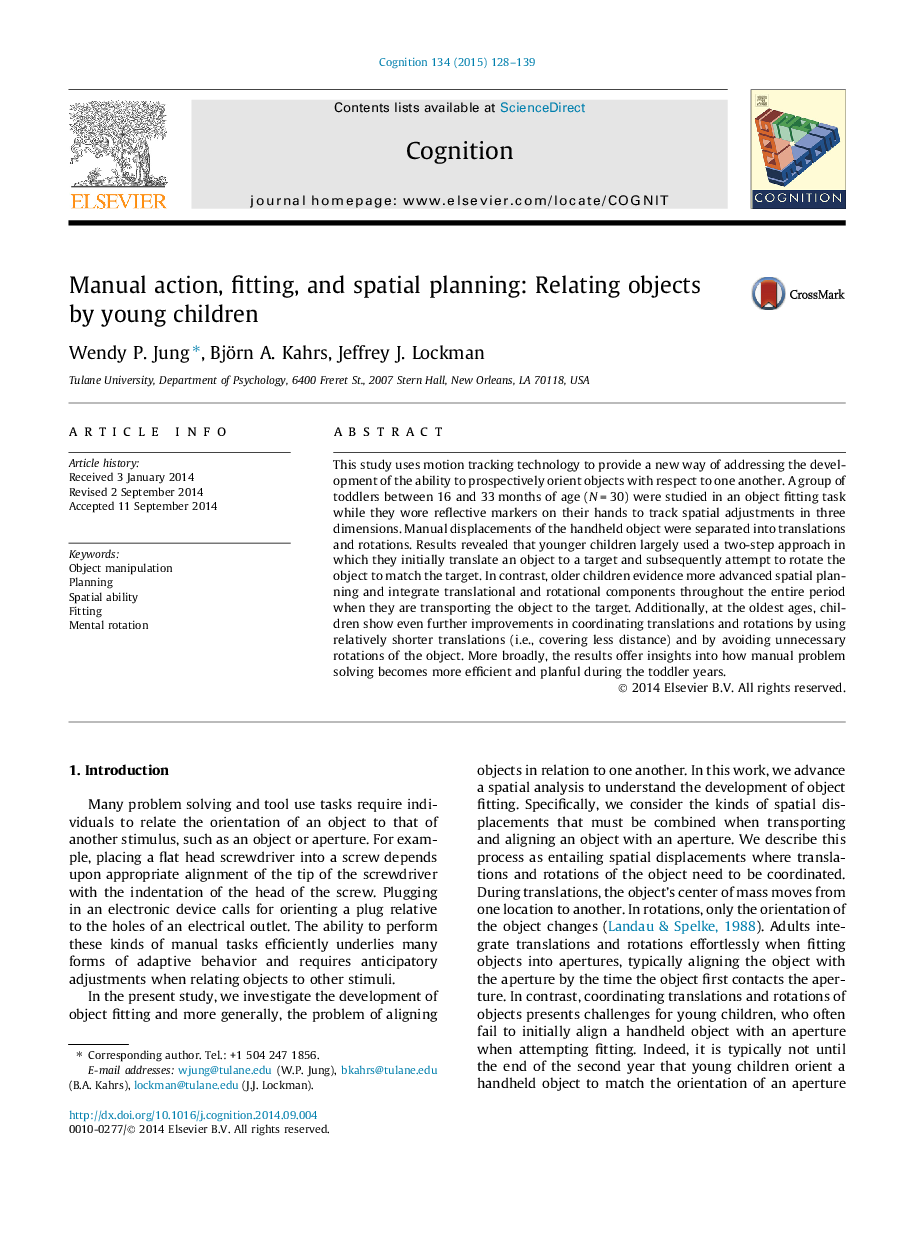| کد مقاله | کد نشریه | سال انتشار | مقاله انگلیسی | نسخه تمام متن |
|---|---|---|---|---|
| 7287575 | 1474133 | 2015 | 12 صفحه PDF | دانلود رایگان |
عنوان انگلیسی مقاله ISI
Manual action, fitting, and spatial planning: Relating objects by young children
ترجمه فارسی عنوان
اقدامات دستی، اتصالات و برنامه ریزی فضایی: ارتباط با اشیاء توسط کودکان جوان
دانلود مقاله + سفارش ترجمه
دانلود مقاله ISI انگلیسی
رایگان برای ایرانیان
کلمات کلیدی
دستکاری شی، برنامه ریزی، توانایی فضایی، مناسب، چرخش روحی،
موضوعات مرتبط
علوم زیستی و بیوفناوری
علم عصب شناسی
علوم اعصاب شناختی
چکیده انگلیسی
This study uses motion tracking technology to provide a new way of addressing the development of the ability to prospectively orient objects with respect to one another. A group of toddlers between 16 and 33Â months of age (NÂ =Â 30) were studied in an object fitting task while they wore reflective markers on their hands to track spatial adjustments in three dimensions. Manual displacements of the handheld object were separated into translations and rotations. Results revealed that younger children largely used a two-step approach in which they initially translate an object to a target and subsequently attempt to rotate the object to match the target. In contrast, older children evidence more advanced spatial planning and integrate translational and rotational components throughout the entire period when they are transporting the object to the target. Additionally, at the oldest ages, children show even further improvements in coordinating translations and rotations by using relatively shorter translations (i.e., covering less distance) and by avoiding unnecessary rotations of the object. More broadly, the results offer insights into how manual problem solving becomes more efficient and planful during the toddler years.
ناشر
Database: Elsevier - ScienceDirect (ساینس دایرکت)
Journal: Cognition - Volume 134, January 2015, Pages 128-139
Journal: Cognition - Volume 134, January 2015, Pages 128-139
نویسندگان
Wendy P. Jung, Björn A. Kahrs, Jeffrey J. Lockman,
